Day 4: Lake Italy to Lower Mills Creek Lake (via Gabbot Pass)
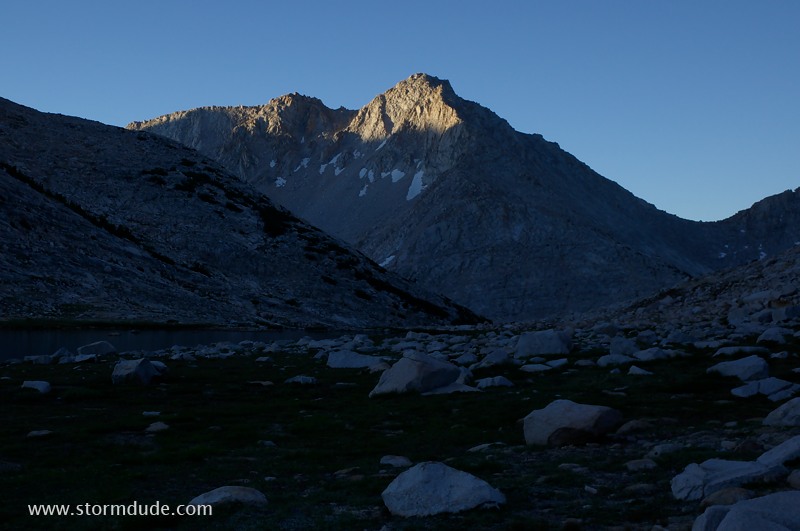
After an active night of shooting stars, the first sunlight hits nearby peaks.
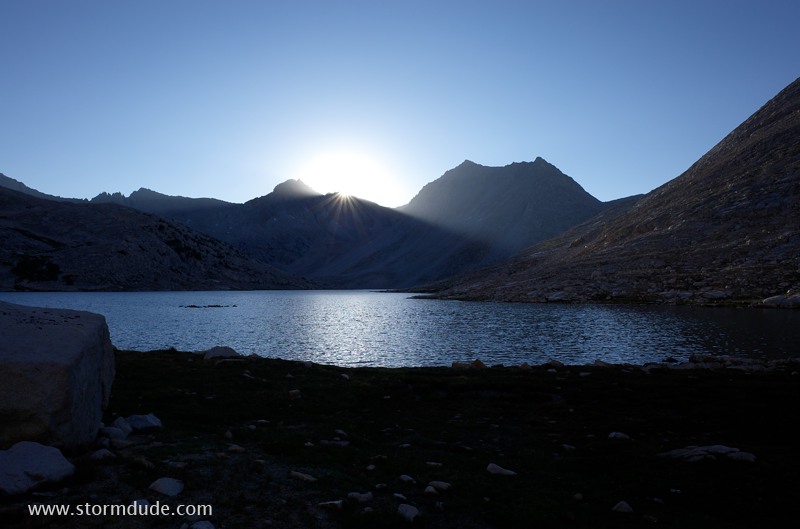
First rays of light across Lake Italy. The temperature drops to a chilly 31 degrees at daybreak.
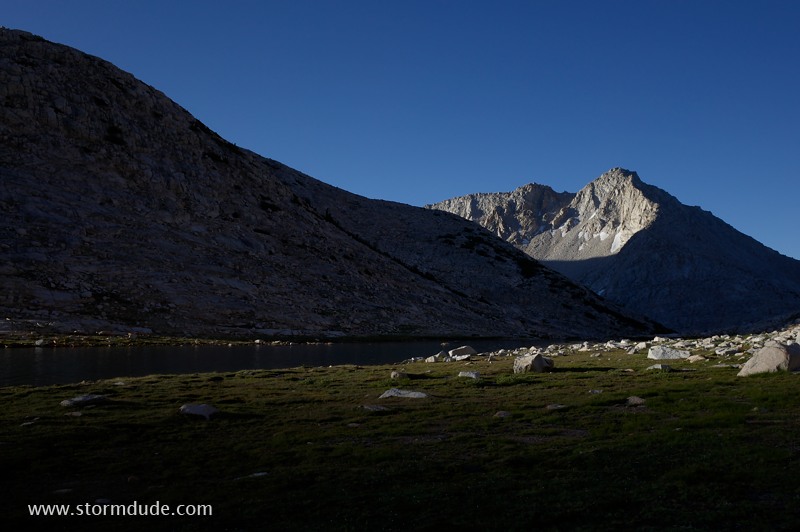
Hot chocolate and cold cereal are a quick breakfast as we get ready for a long day of hiking.
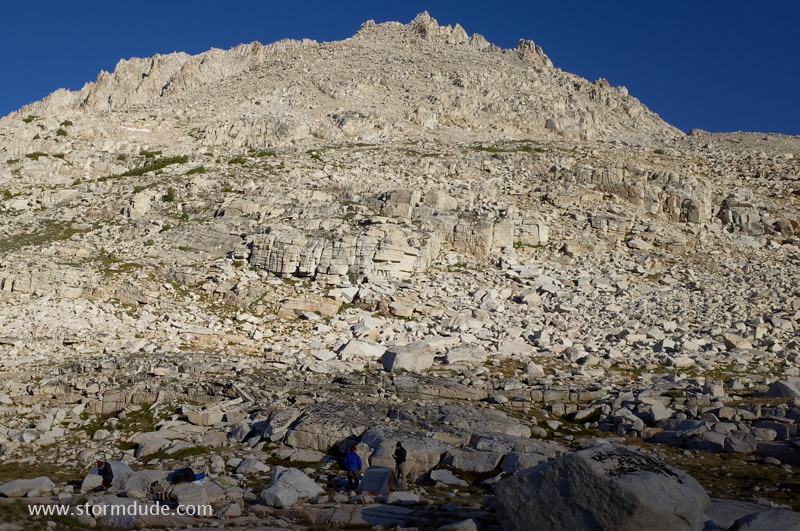
Sunlight about to hit our campsite.
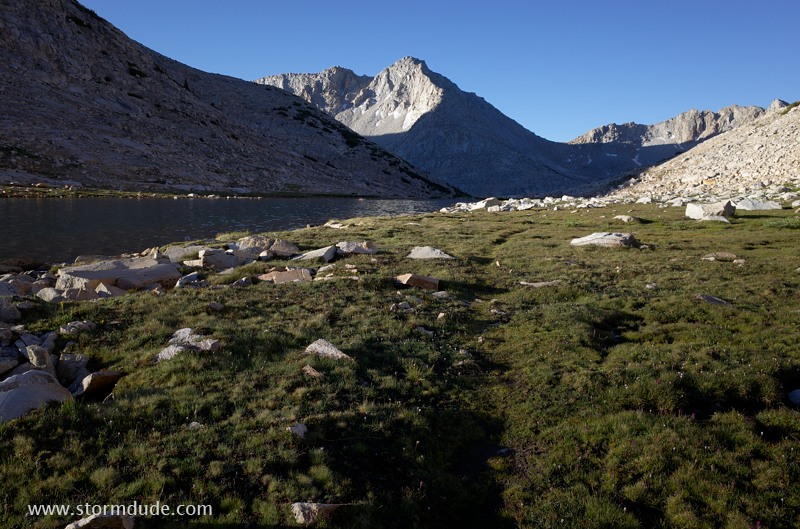
Fisherman's trail along the north shore of Lake Italy.
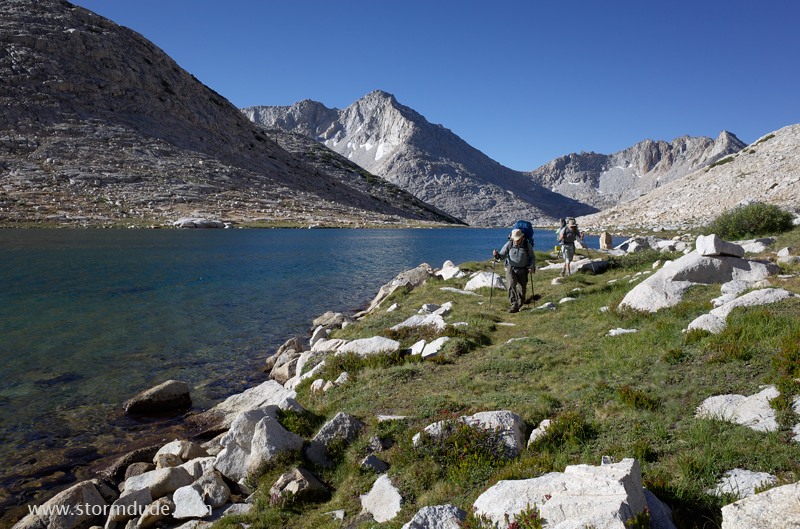
Around 8:30 we begin hiking west.
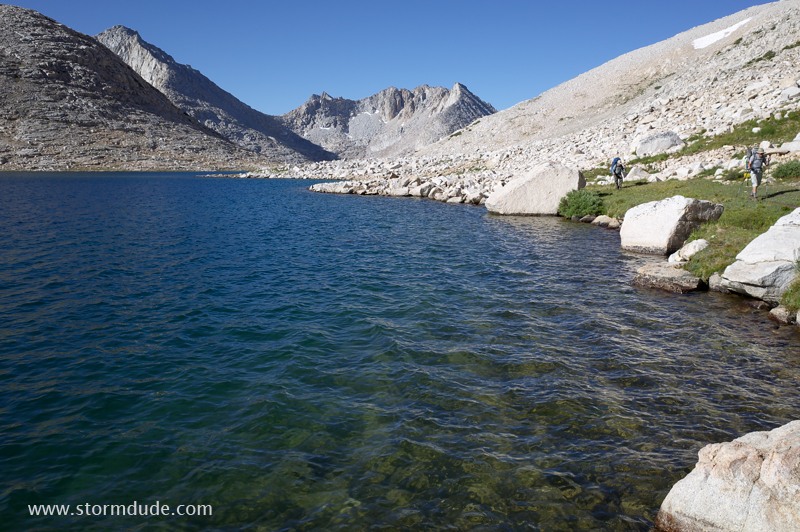
The bright sunshine warms the morning to comfortable hiking temperatures.
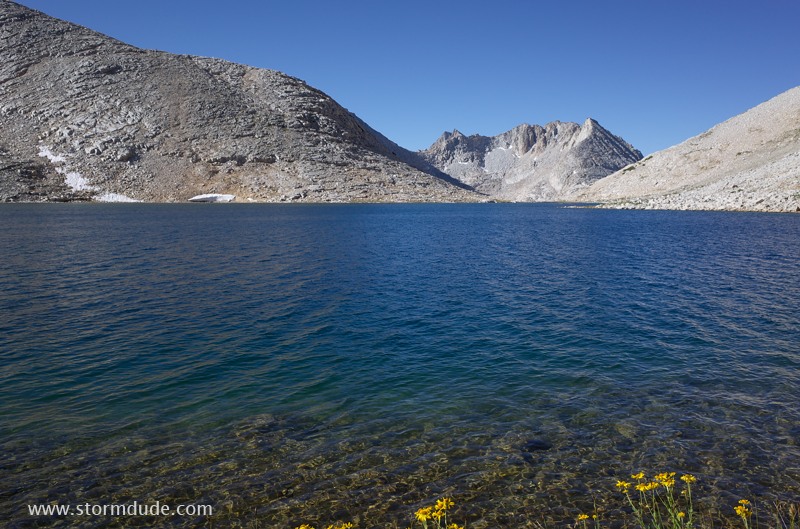
View back west across the pristine lake.
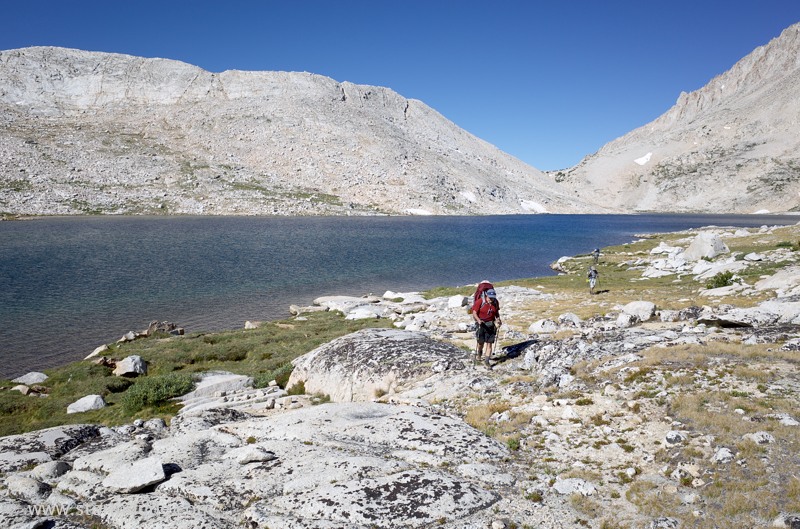
We hike for several miles along the lake, crossing a couple of small talus fields along the way.
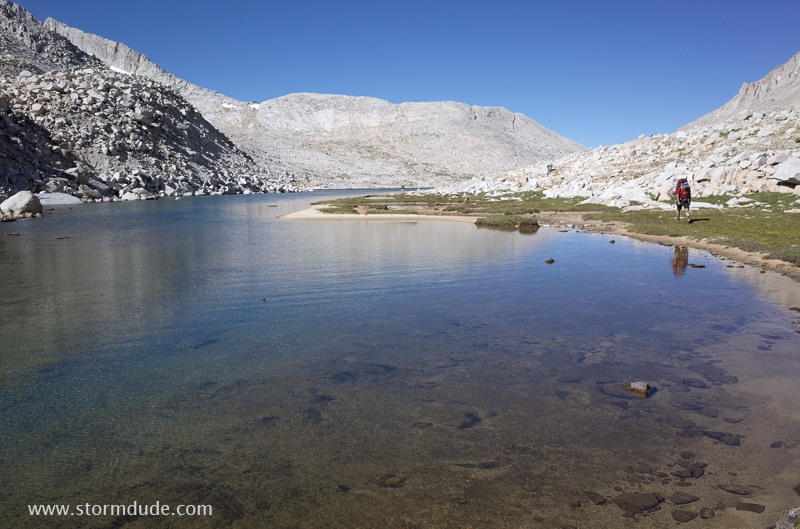
An hour later at the eastern end of Lake Italy.
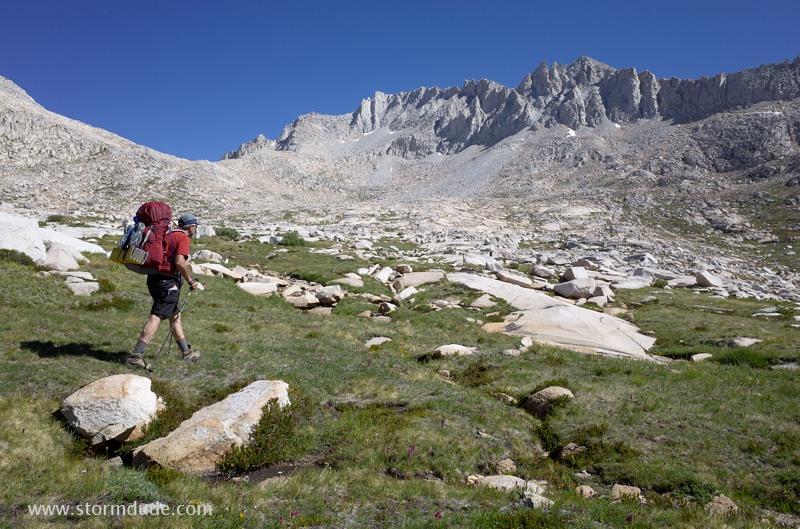
We begin our uphill climb towards Gabbot Pass (beyond the notch on the left).
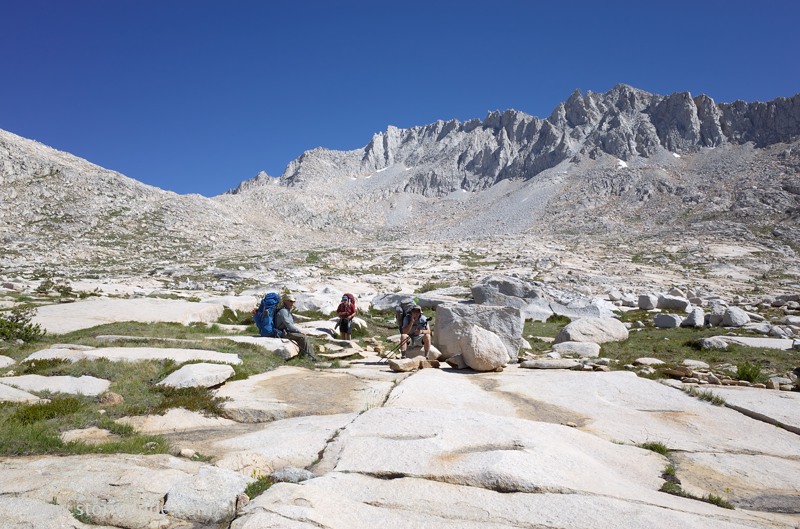
Mid-morning rest break.
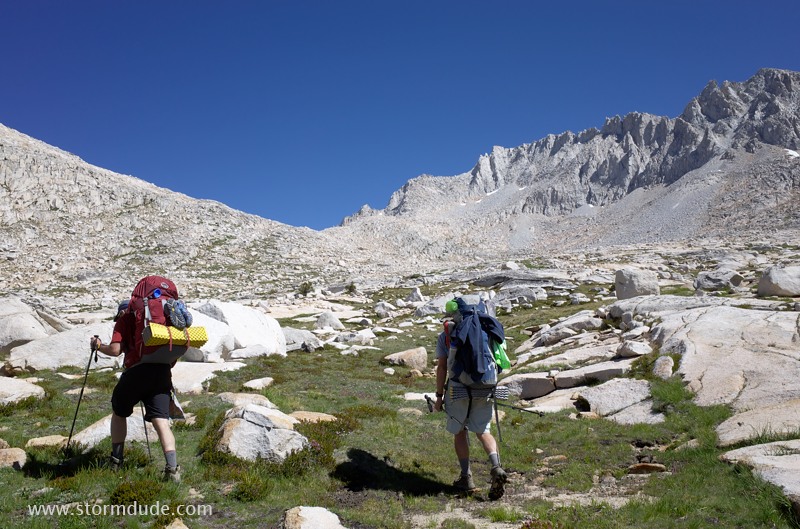
Easy cross-country towards the notch. From there, we hope to see a good approach to the pass.
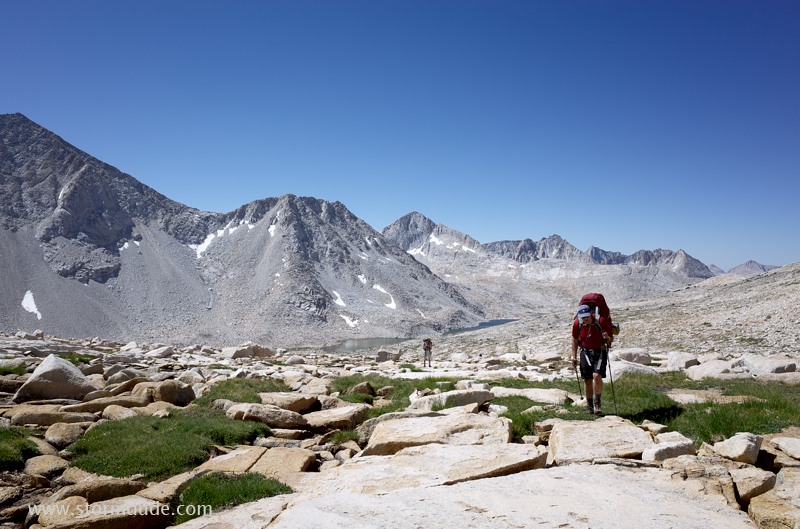
Toe Lake and Lake Italy are now far below us.
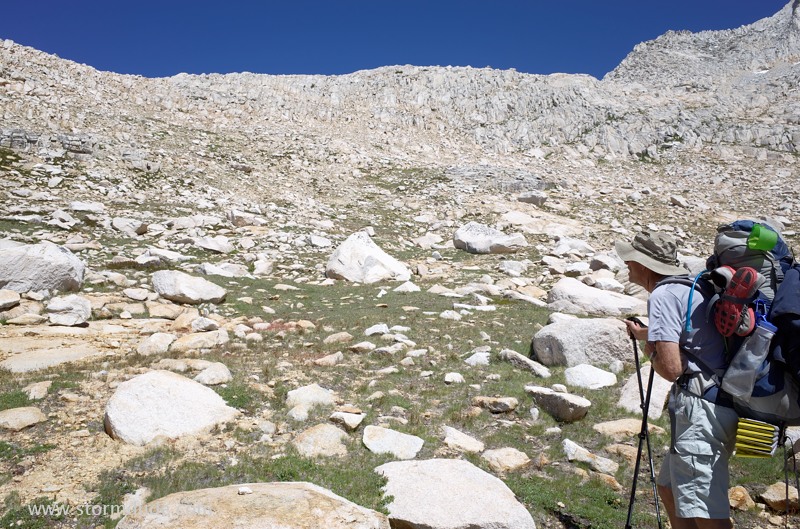
Green represents more grass and easier hiking, so we head north-northeast.
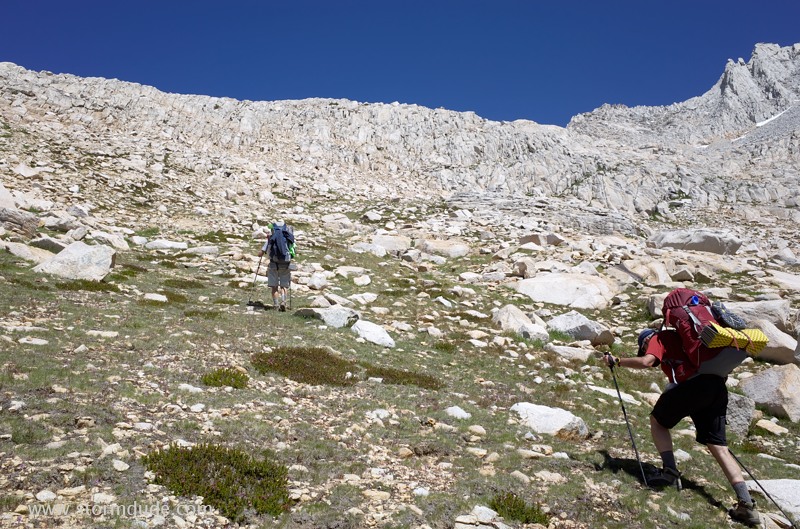
Very steep at this point, but easy hiking between rocks, boulders and granite slabs.
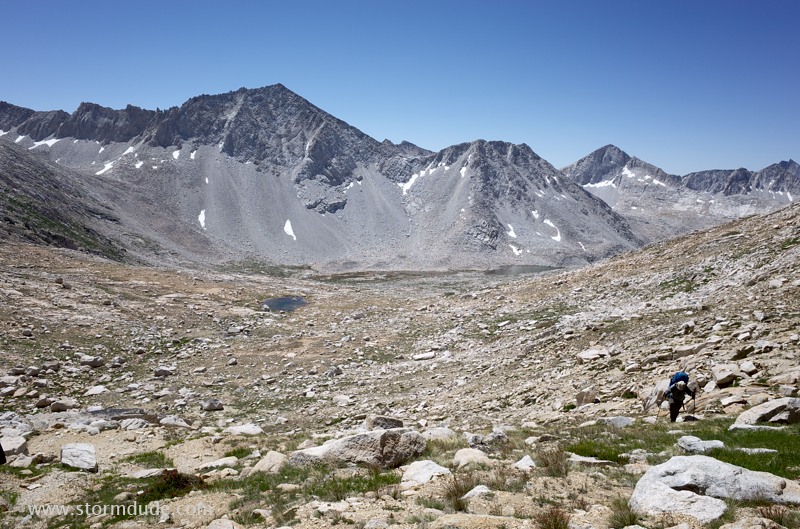
Looking back down the steepening side of the mountain.
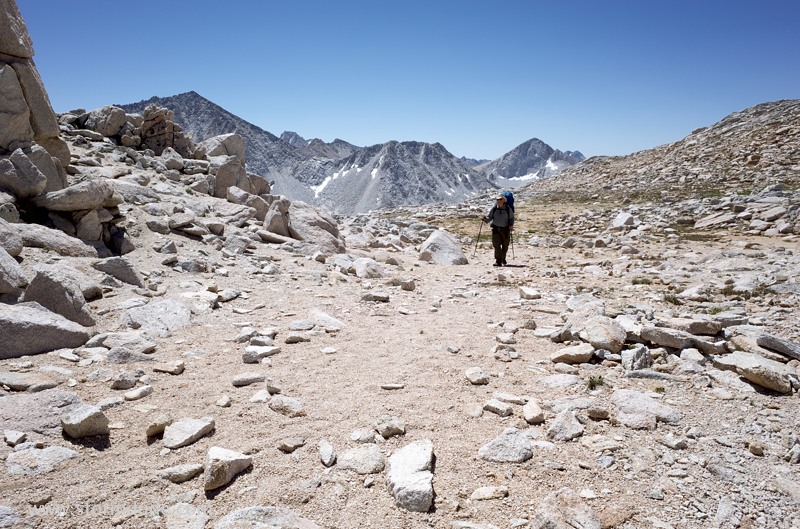
Around noon, we reach 12,200-foot Gabbot Pass.
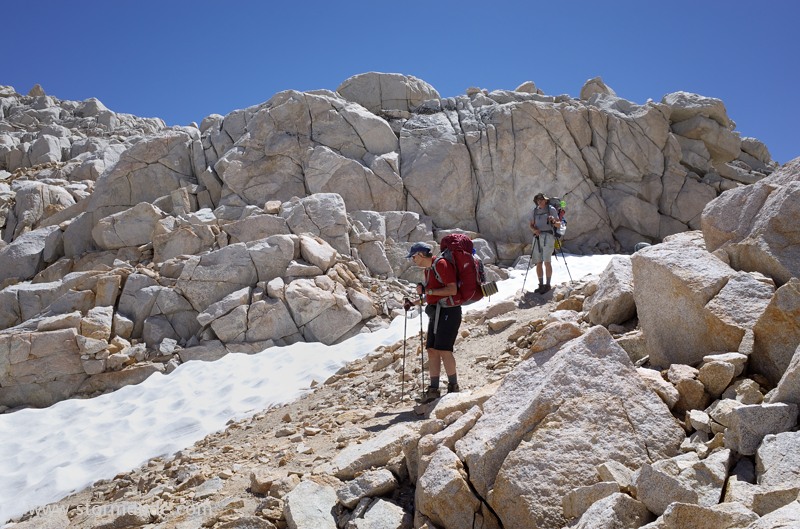
Down the other side. Gabbot Pass is along the Sierra High Route created by Steve Roper in 1977.
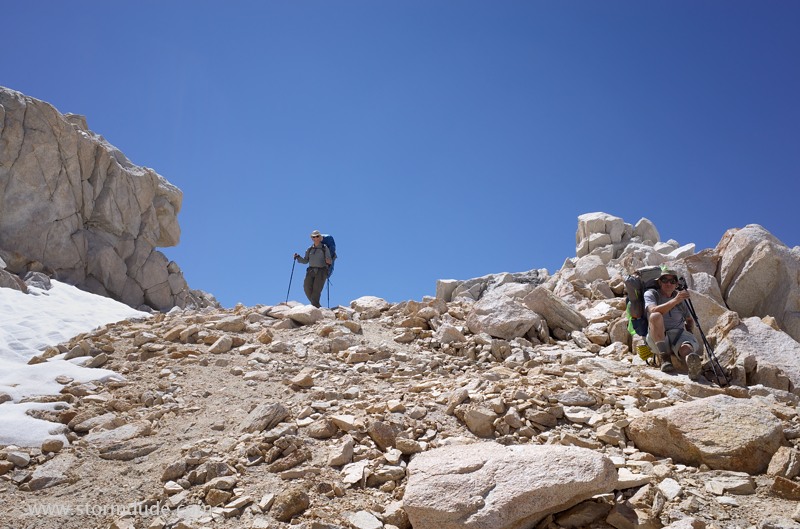
The Sierra High Route covers 210 miles and rarely follows trails, instead providing challenging cross-country routes that cross 33 passes.
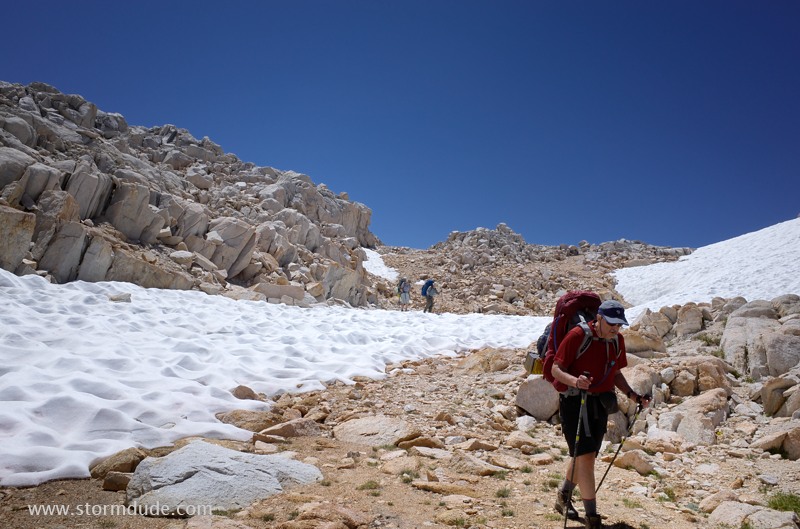
Snowfields just north of Gabbot Pass.
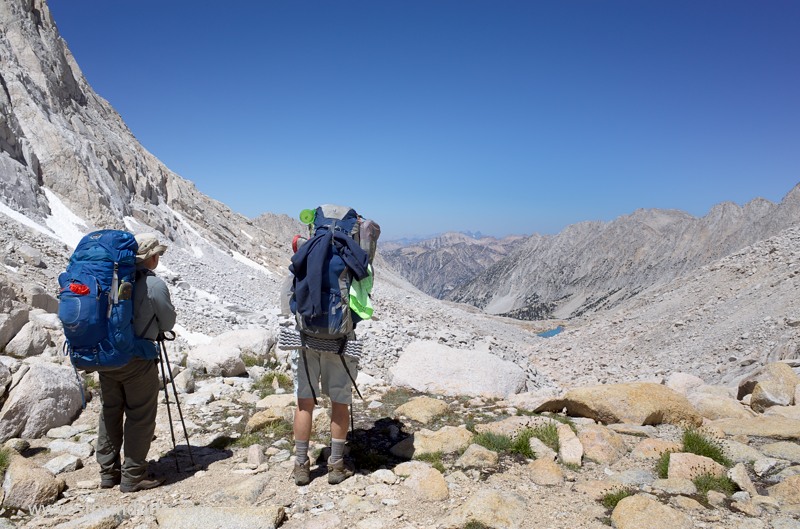
View of the Mills Creek drainage to the northwest. This is the upper portion of the Second Recess.
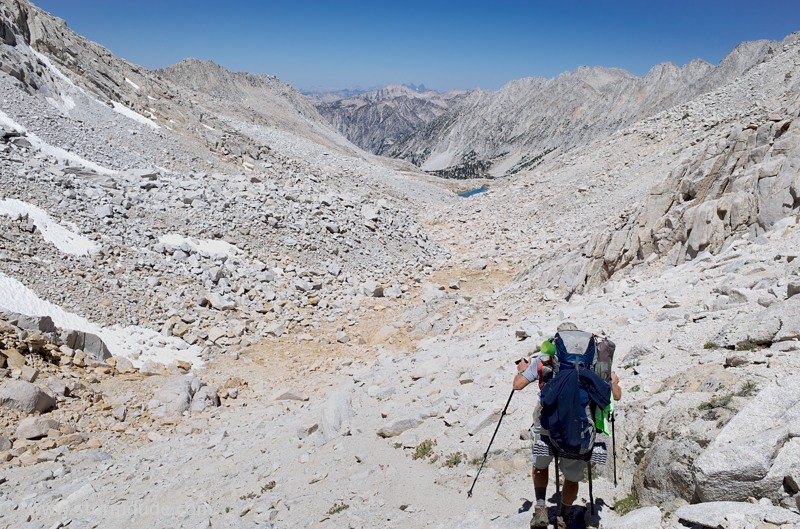
Very steep on a narrow winding trail, but careful use of hiking poles make this a safe descent for experienced backpackers.
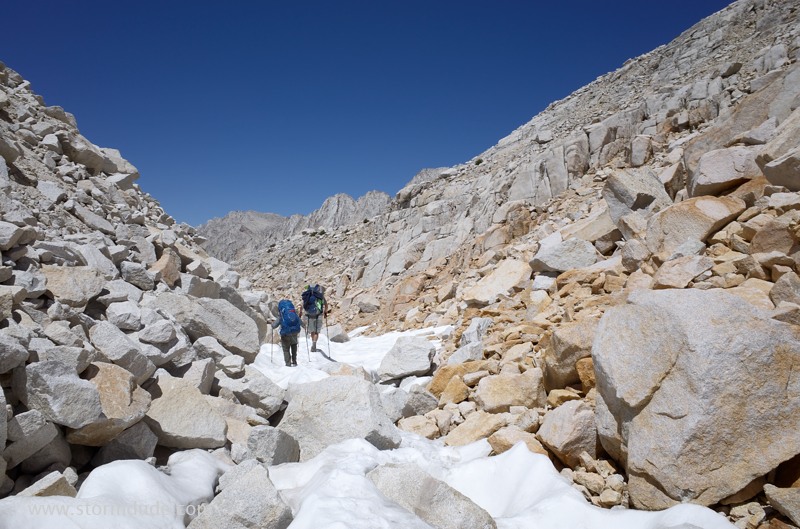
Snowfield through a talus field requires occasional use of hands.
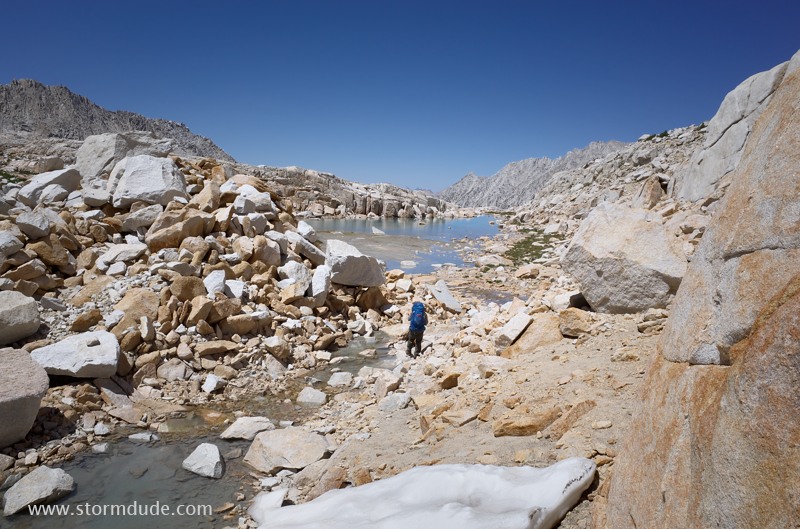
We soon reach a small tarn located at 11,800 feet, 400 feet lower than Gabbot Pass.
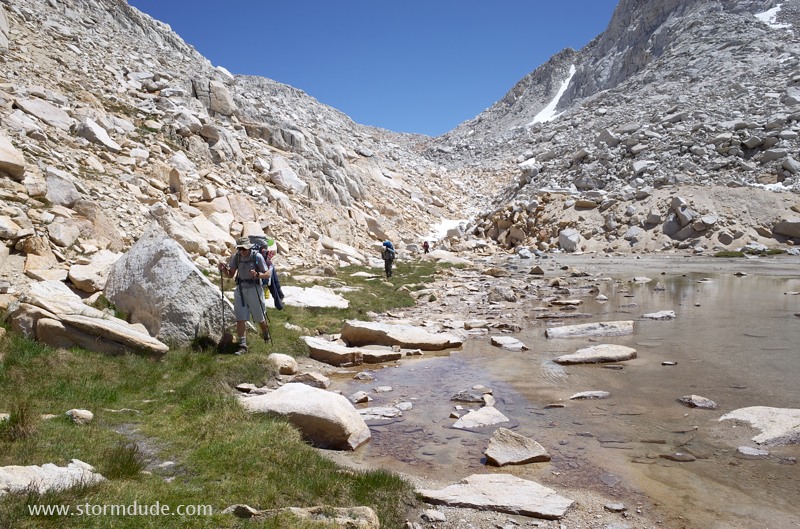
At 2 pm, we finally stop for lunch. Ice cold water from the inflow creek is refreshing as we eat PB&J and tuna sandwiches.
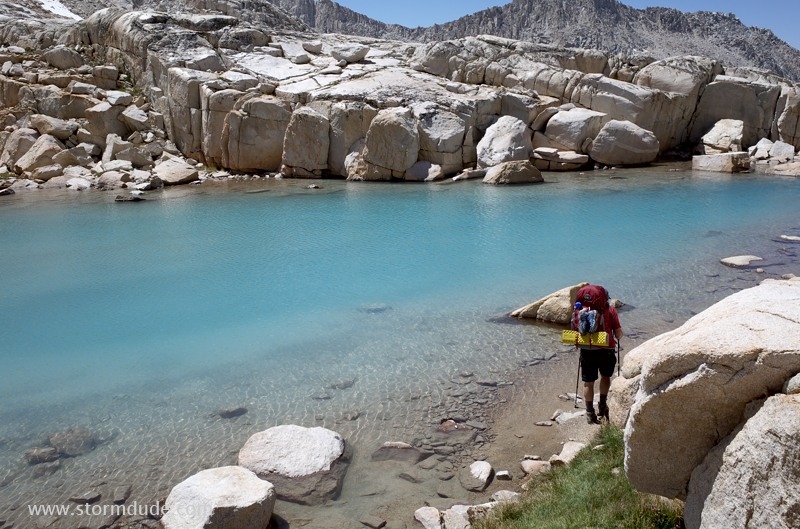
Beautiful turquoise tarn as Steve hikes along the shoreline.
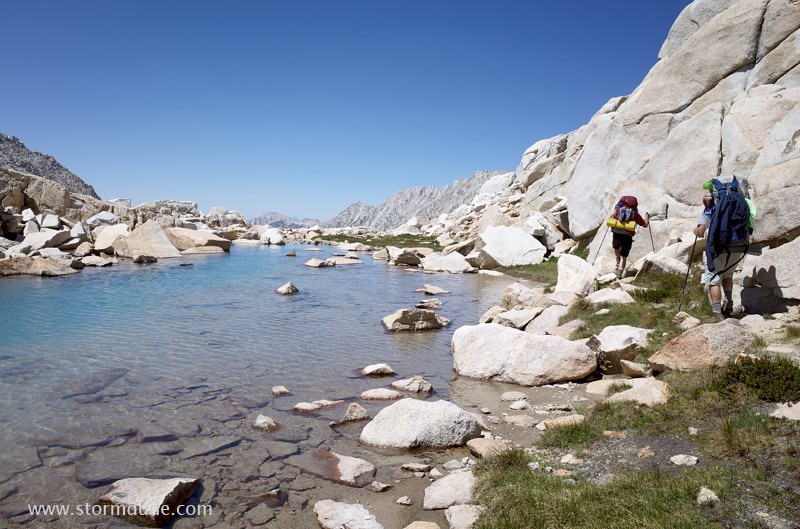
Picking our way around sharp-sided boulders as we work our way along the shoreline of the tarn.
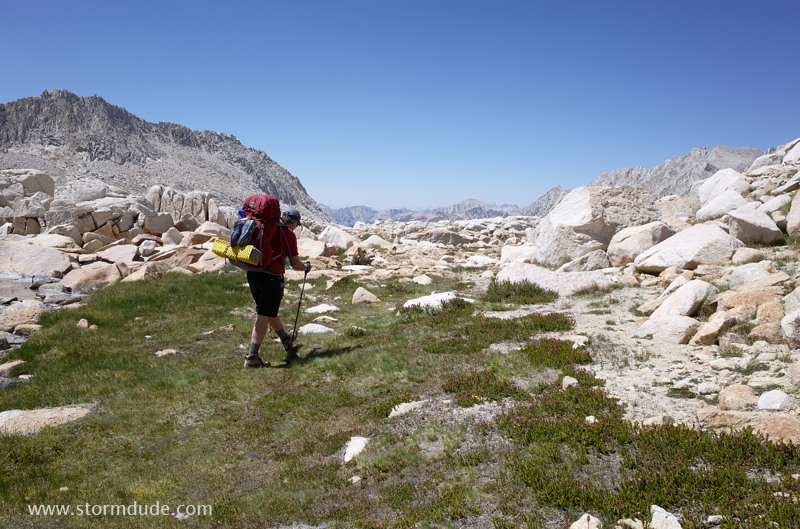
From here, the trail becomes more difficult, with numerous talus fields.
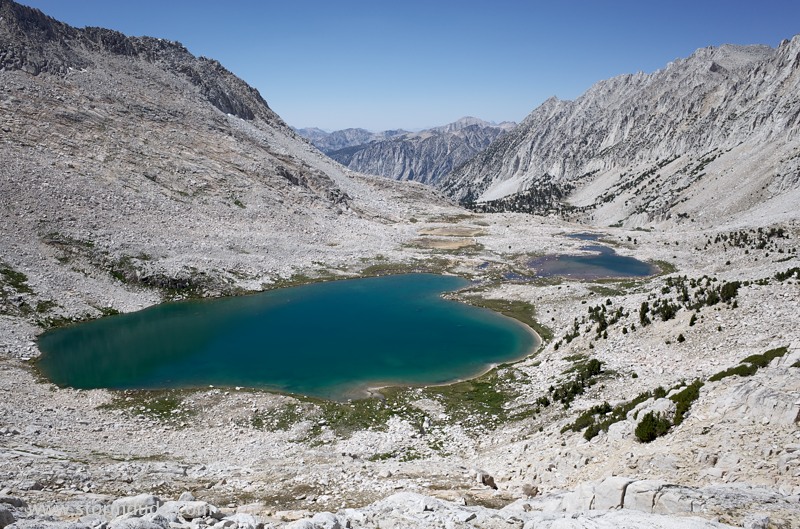
Incredible view of Upper Mills Creek Lake.
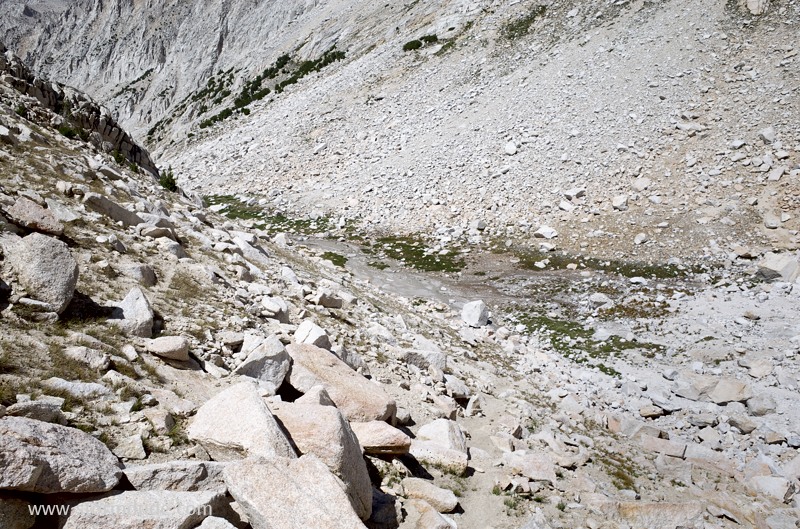
Very steep trail takes us down to a barren valley. Steve Roper's descriptions are useful for our trail finding.
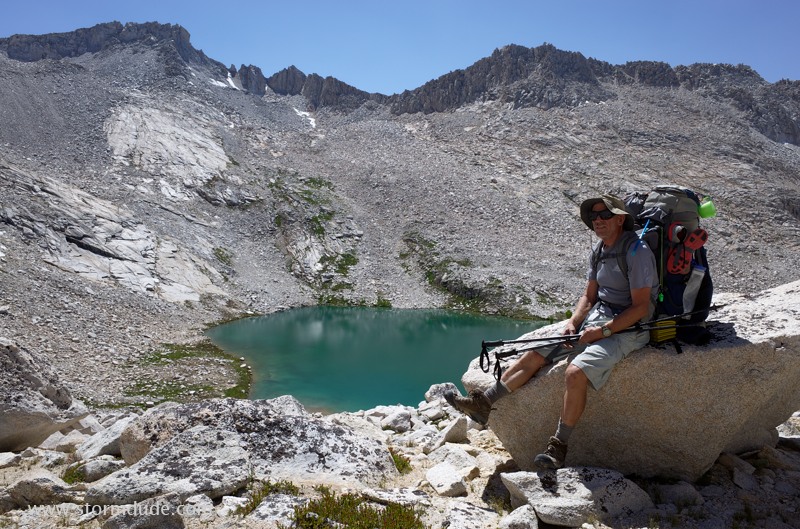
Just above Upper Mills Creek Lake, Mike enjoys a rest.
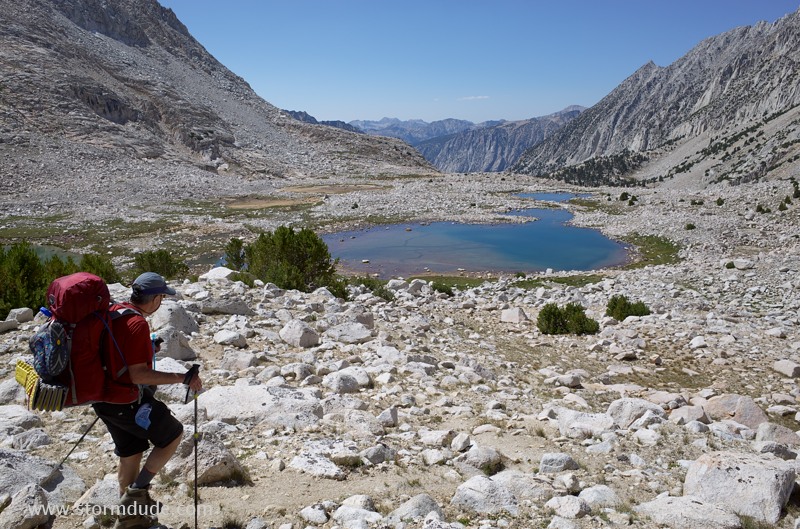
Steve continues down to an unnamed lake below Upper Mills Creek Lake.
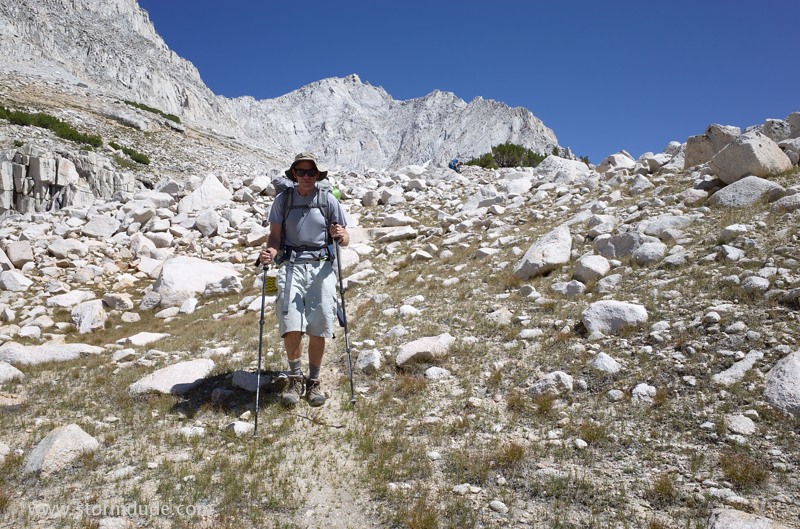
Between talus fields, we often follow a faint trail.
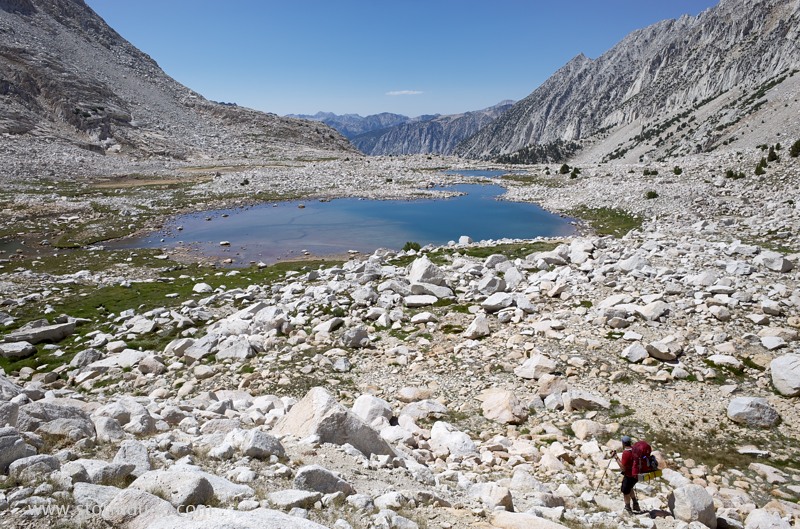
By mid-afternoon, we are through the worst of the talus.
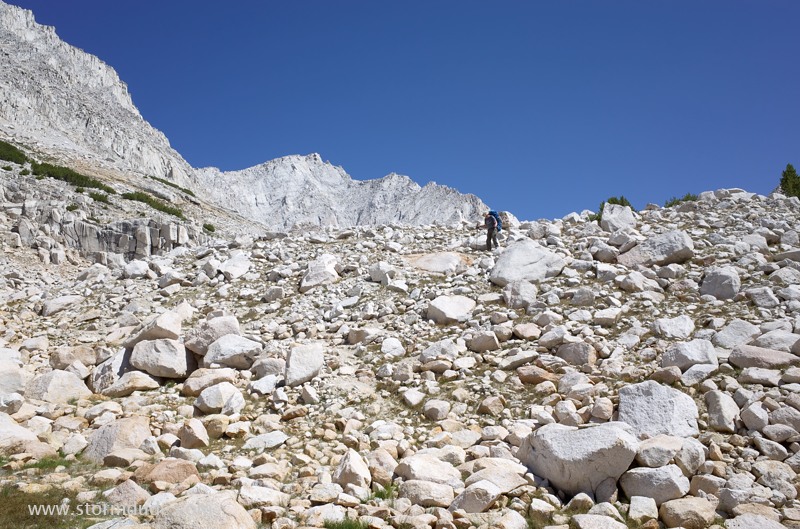
Dave's experience in mountaineering comes in handy as he descends through the talus.
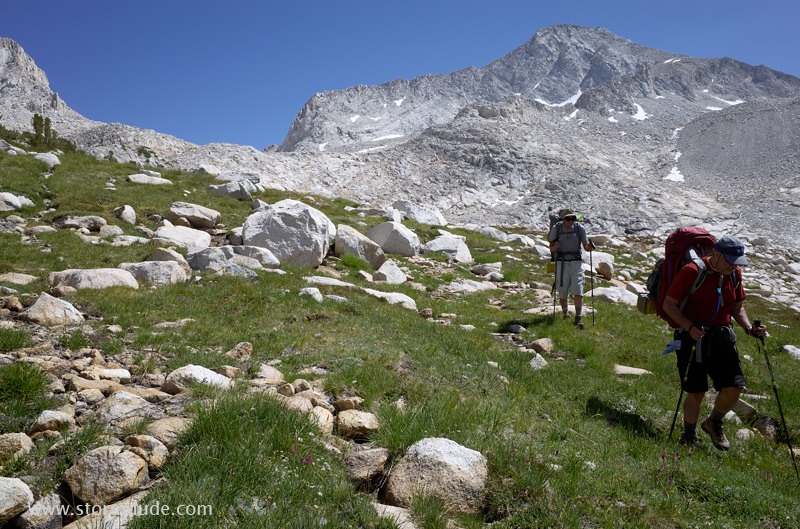
Grassy slopes are a welcome relief from the tedious nature of working through the talus.
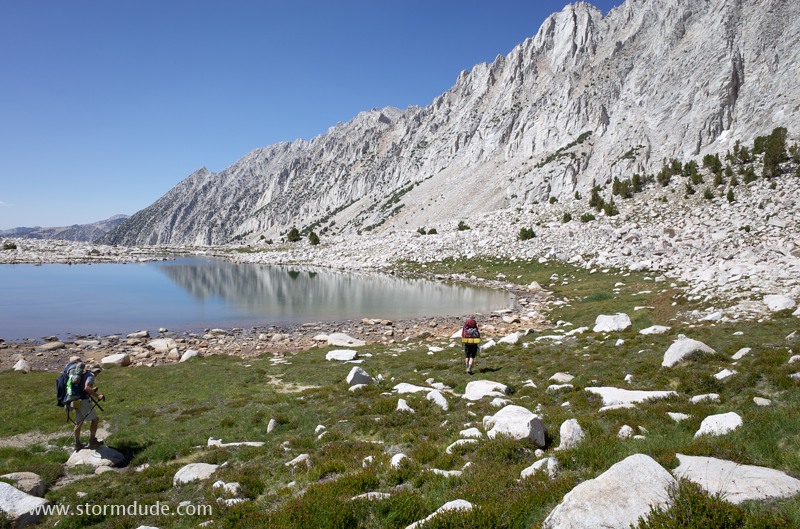
At 11,100 feet between the two named lakes.
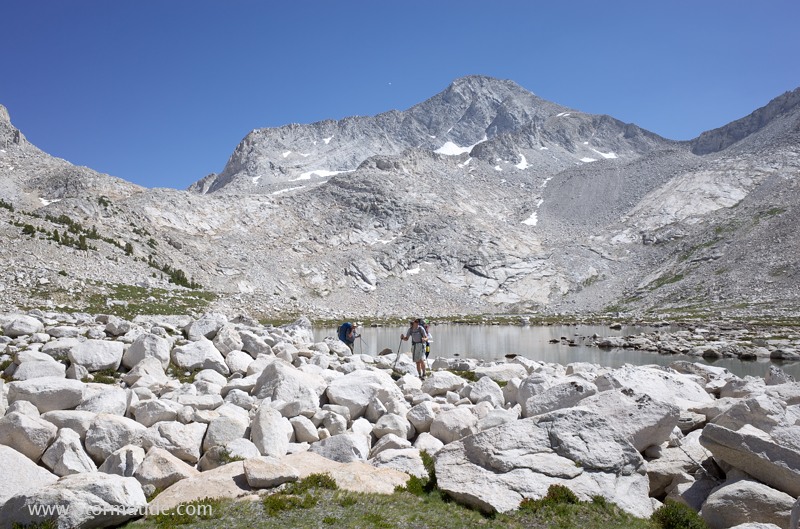
One last challenging talus field. We came down through the left side of this photo.
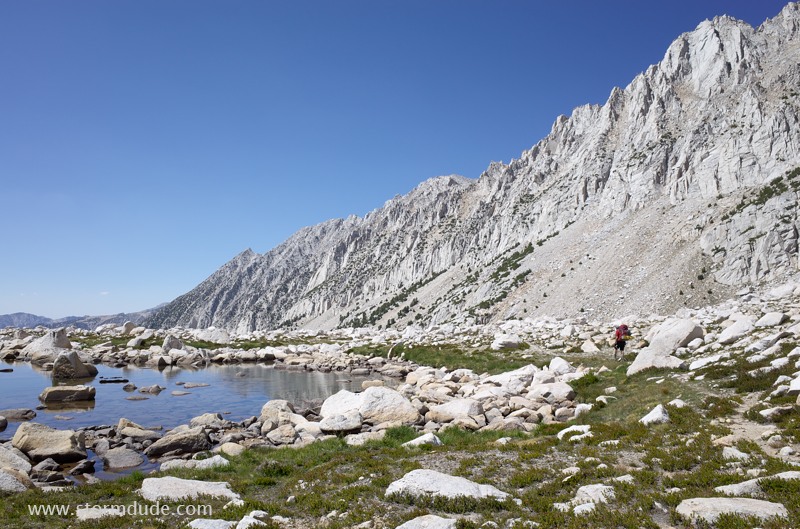
Every time we think we have finally cleared the last of the talus, another small field pops up.
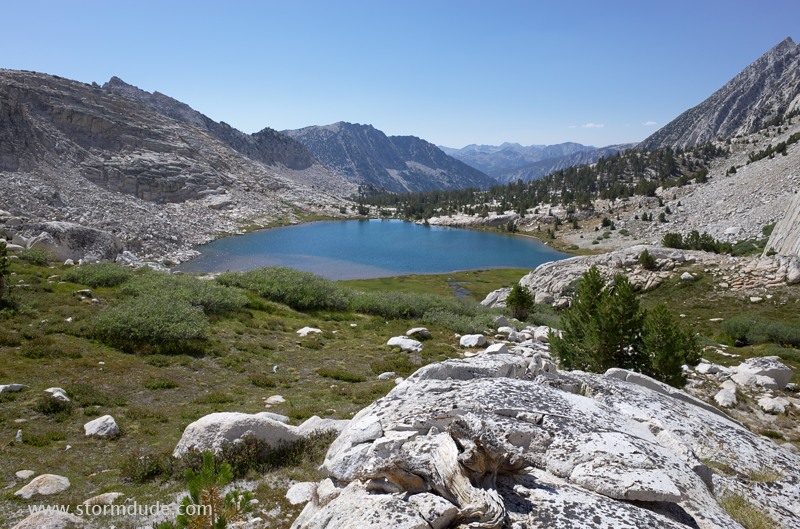
At last! Lower Mills Creek lake is just below us.
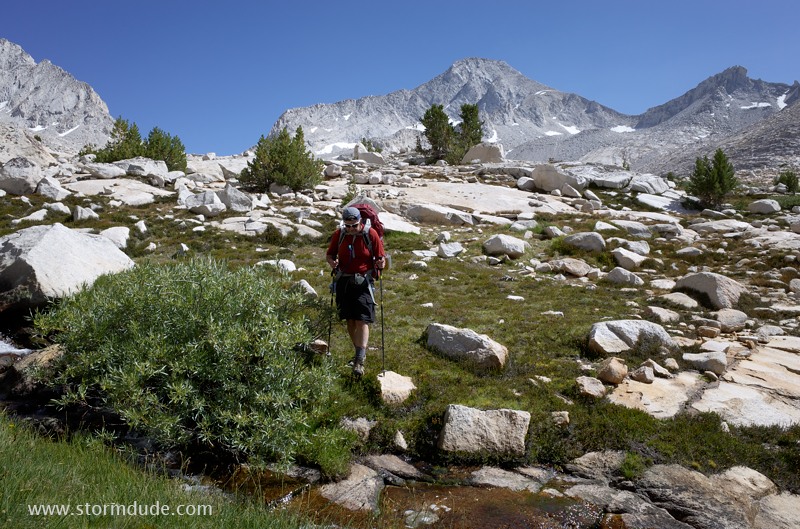
Amazing scenery as we cross the inflow creek to Lower Mills Creek Lake.
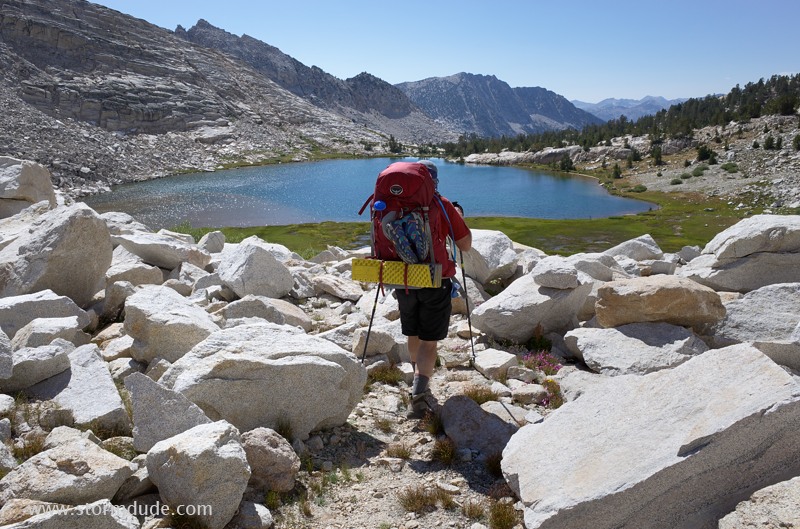
Almost there.
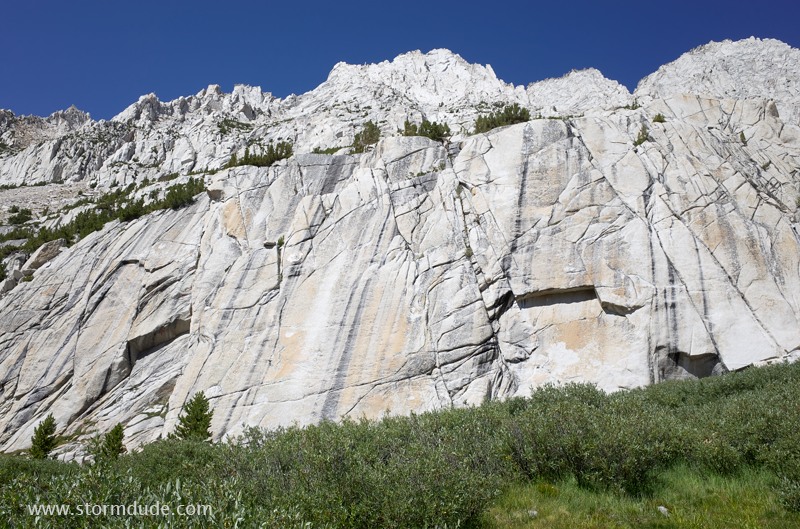
Carved walls above the lake.
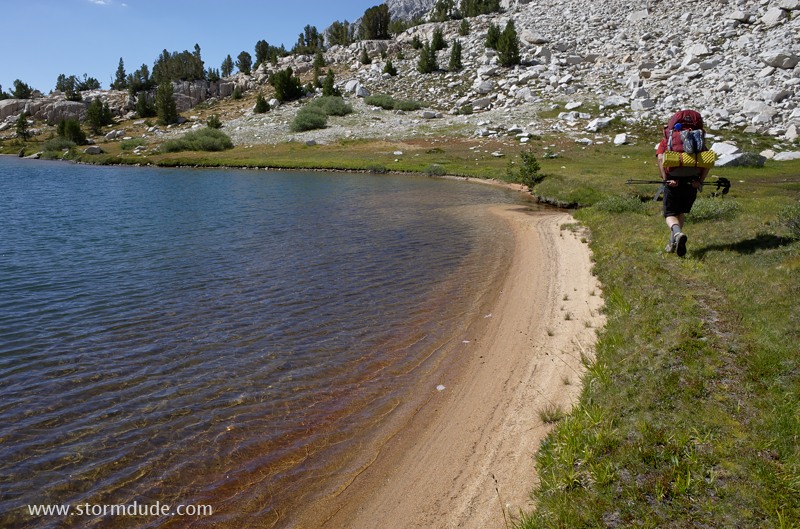
We reach the lake late in the afternoon.
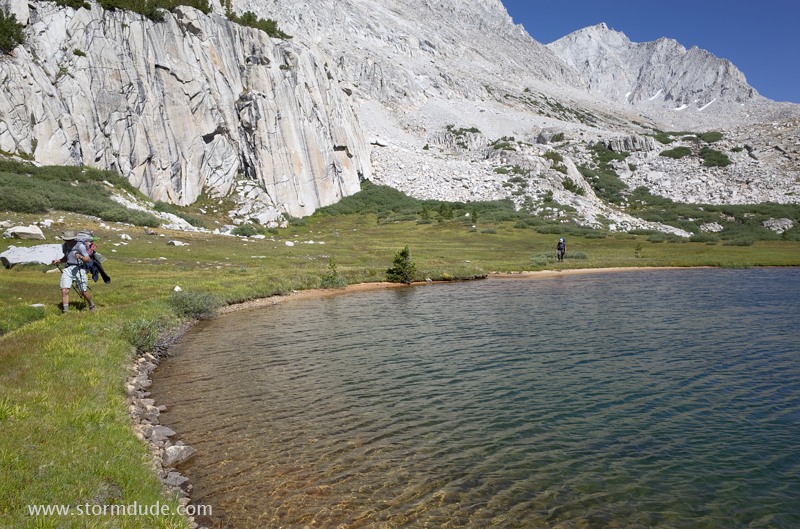
Mike and Dave follow the fisherman's use trail along the shore of Lower Mills Creek Lake.
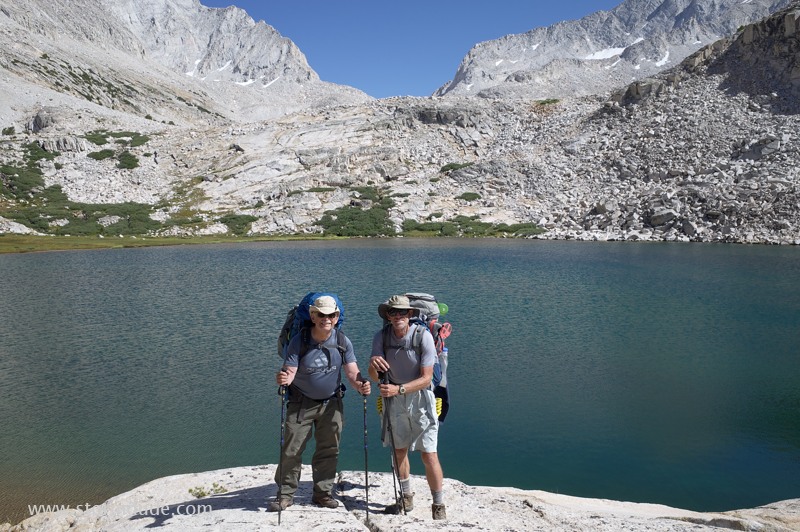
Beautiful, remote Lower Mills Creek Lake, elevation 10,900 feet.
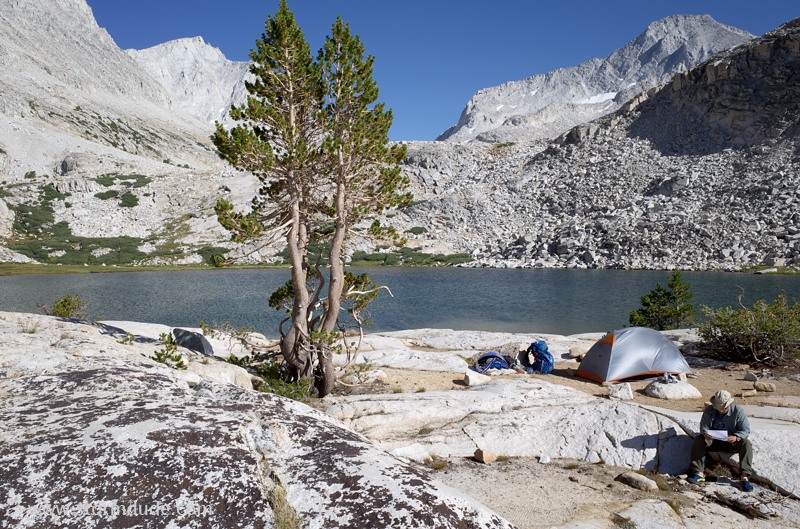
After setting up his tent, Dave catches up on some reading.
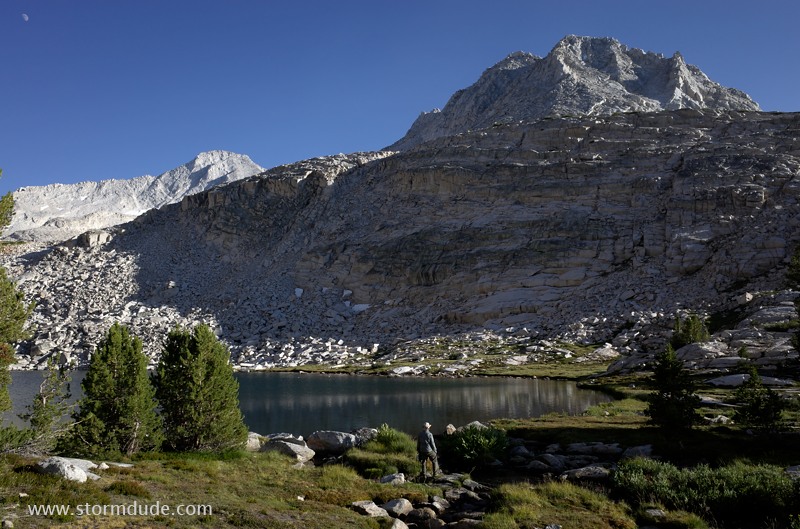
Early evening near our campsite.
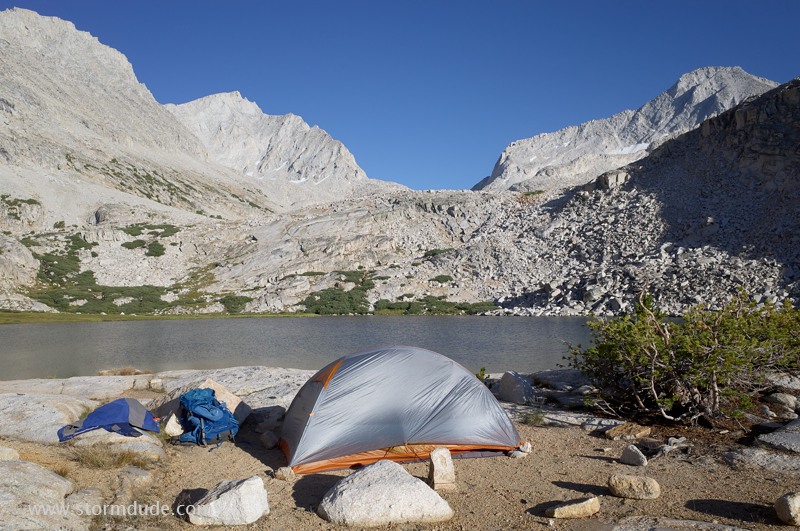
Tent site overlooking Lower Mills Creek Lake.
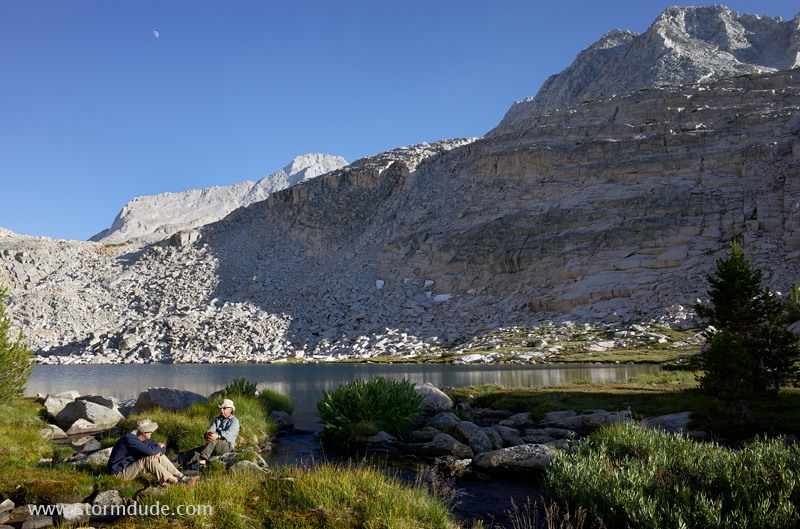
Steve and Dave enjoy a quiet evening. We haven't seen anyone else since leaving yesterday at Lake Italy, one advantage of hiking along the Sierra High Route instead of the JMT/PCT.
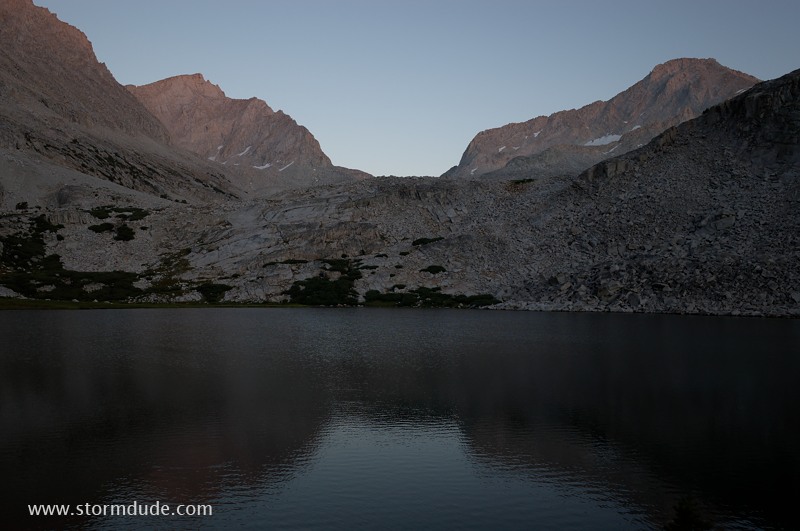
Dusk comes slowly at High Sierra lakes.